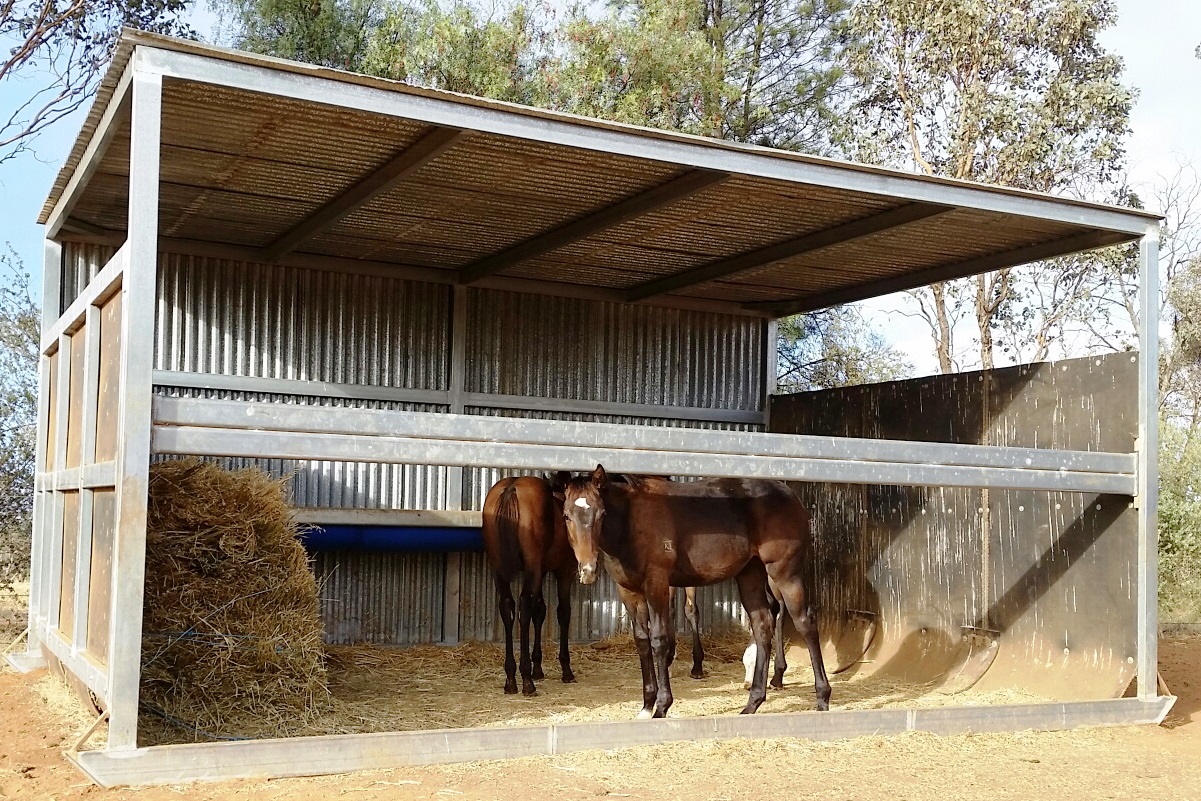In order for your young thoroughbred to make a smooth transition from foal to weanling, there are several practices we implement to ease the separation process and help the horse adjust to its new, independent life. Preparation is paramount.
Towards the end of the breeding season, mares and foals are moved to paddocks that the foals will remain in after weaning. They are grouped according to foal gender so that they have several months to settle in to their paddocks with foals they will spend the next 12 to 18 months of their lives with.
Foals begin nibbling at their dam’s grain ration from as young as one week of age, and quickly become accustomed to sharing their mother’s twice-daily feed. At such a young age, the foal’s requirement for grain supplementation is small, so sharing with their dams is sufficient to begin with. Over the next several months as the foals grow, cut new teeth and the mare’s lactation peaks and then declines, the foal’s requirement for a balanced ration increases. The purpose-built feed bays in all paddocks that have serviced mares and foals alike, are fitted with a steel bar too low for mares to enter, but high enough to allow free access to foals, transforming the shed that the foals are accustomed to entering with their mothers, into creep feeders. These creep feeders allow the foals to receive a balanced grain ration that the mares cannot access. Feed intake is monitored and gradually increased, ensuring the foals are consuming their formulated rations before weaning, so that the change in nutritional intake is minimised when the foal is weaned. The creep sheds also encourage foal independence as foals become accustomed to eating away from their dams, yet still within the same paddock. Breakfast times are not only feeding and routine health and wellbeing checks, but also the time when staff monitor foal behaviour to assess the independence of foals from their dams and their readiness for weaning.
Over the next several months, foals become accustomed to their daily routine, gaining confidence and independence, and continue to have human interaction during feed times, and for routine procedures including drenches, trimming, vaccinations and freeze branding, all of which prepare the foals for the weaning and handling program in the coming months.
In early Autumn, starting with the oldest foals, small numbers in each paddock group are weaned each Friday, weaning approximately 10 foals per week. Mares are swiftly moved away from the foals, and the remaining mares and foals from the paddock stay in close proximity to ease the anxiety of the newly weaned foals. The weanlings are given the weekend to settle, then beginning on the following Monday, progress through a two week intensive handling program in our covered, rubber-lined handling yards with Peter Cowell from Conundrum Horse Handling. The handling program includes catching, leading, tying up, hoof handling and generally being confident and obedient around their handlers. On graduating, the weanlings join their paddock mates in their allocated paddock, which they are already familiar with. The weanlings then return to their luxurious life of grazing, playing and sun-baking while they grow up, coming in for routine foot trimming, drenching and a brief handling refresher session every eight weeks.

